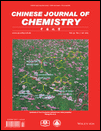Chlorine-Induced Hydrogen-Bonding Network of A Novel Dimer Based on Nickel and Tridentate Ligand: 3-Hydrazine-4-amino-1,2,4-Triazole
Yangang Bi
State Key Laboratory of Explosion Science and Technology, Beijing Institute of Technology, Beijing 100081, China
Search for more papers by this authorWenyuan Zhao
State Key Laboratory of Explosion Science and Technology, Beijing Institute of Technology, Beijing 100081, China
Search for more papers by this authorYing Li
State Key Laboratory of Explosion Science and Technology, Beijing Institute of Technology, Beijing 100081, China
Search for more papers by this authorCorresponding Author
Tonglai Zhang
State Key Laboratory of Explosion Science and Technology, Beijing Institute of Technology, Beijing 100081, China
State Key Laboratory of Explosion Science and Technology, Beijing Institute of Technology, Beijing 100081, China, Fax: 0086-010-68911202Search for more papers by this authorYangang Bi
State Key Laboratory of Explosion Science and Technology, Beijing Institute of Technology, Beijing 100081, China
Search for more papers by this authorWenyuan Zhao
State Key Laboratory of Explosion Science and Technology, Beijing Institute of Technology, Beijing 100081, China
Search for more papers by this authorYing Li
State Key Laboratory of Explosion Science and Technology, Beijing Institute of Technology, Beijing 100081, China
Search for more papers by this authorCorresponding Author
Tonglai Zhang
State Key Laboratory of Explosion Science and Technology, Beijing Institute of Technology, Beijing 100081, China
State Key Laboratory of Explosion Science and Technology, Beijing Institute of Technology, Beijing 100081, China, Fax: 0086-010-68911202Search for more papers by this authorAbstract
The reaction of NiCl2 and 3-hydrazine-4-amino-1,2,4-triazole (Hatr) in the mixed solvent of EtOH and H2O yielded a dimer compound ([Ni2(Hatr)2(H2O)2(EtOH)2Cl2]Cl2·EtOH) with water and EtOH molecules coordinated to nickle ions. It crystallized in trigonal space group R-3, a=b=29.67(1) Å, c=8.95(7) Å, β=120(1)°, as determined by single-crystal X-ray diffraction. Then, they were fully characterized by the IR spectroscopy, differential scanning calorimetry (DSC), thermogravimetry (TG), and elemental analysis.
REFERENCES
- 1 Gadzikwa, T.; Farha, O. K.; Malliakas, C. D.; Kanatzidis, M. G.; Hupp, J. T.; Nguyen, S. T.. J. Am. Chem. Soc., 2009, 131, 13613.
- 2 Zhai, Q. G.; Li, S. N.; Gao, X.; Ji, W. J.; Jiang, Y. C.; Hu, M. C.. Inorg. Chem. Commun., 2010, 13, 211.
- 3 Klap?tke, T. M.; Radies, H.; Stierstorfer, J.; Tarantik, K. R.; Chen, G.; Nagori, A.. Propell. Explos. Pyrot., 2010, 35, 213.
- 4 Yuan, C.; Saito, S.; Camacho, C.; Irle, S.; Hisaki, I.; Yamaguchi, S.. J. Am. Chem. Soc., 2013, 135, 8842.
- 5 Naik, A. D.; Robeyns, K.; Meunier, C. F.; Leonard, A. F.; Rotaru, A.; Tinant, B.; Filinchuk, Y.; Su, B. L.; Garcia, Y.. Inorg. Chem., 2014, 53, 1263.
- 6 Preihs, C.; Arambula, J. F.; Magda, D.; Jeong, H.; Yoo, D.; Cheon, J.; Siddik, Z. H.; Sessler, J. L.. Inorg. Chem., 2013, 52, 12184.
- 7 Fischer, N.; Klap?tke, T. M.; Reymann, M.; Stierstorfer, J.. Eur. J. Inorg. Chem., 2013, 2013, 2167.
- 8 Jana, A.; Konar, S.; Das, K.; Ray, S.; Golen, J. A.; Rheingold, A. L.; Carrella, L. M.; Rentschler, E.; Mondal, T. K.; Kar, S. K.. Polyhedron, 2012, 38, 258.
- 9 Uhl, W.; Stefaniak, C.; Vo?, M.; K?sters, J.; Rogel, F.. Organometallics, 2012, 31, 6988.
- 10 Kluber, R. W.. Inorg. Chem., 1965, 4, 1047.
- 11 Chen, N.; Li, M. X.; Yang, P.; He, X.; Shao, M.; Zhu, S.-R.. Cryst. Growth Des., 2013, 13, 2650.
- 12 Esteban, J.; Font-Bardia, M.; Escuer, A.. Inorg. Chem., 2014, 53, 1113.
- 13 Zhang, R. B.; Zhang, J.; Li, Z.-J.; Cheng, J. K.; Qin, Y. Y.; Yao, Y. G.. Cryst. Growth Des., 2008, 8, 3735.
- 14 Zhang, G.; Vasudevan, K. V.; Scott, B. L.; Hanson, S. K.. J. Am. Chem. Soc., 2013, 135, 8668.
- 15 Wilson, J. J.; Lippard, S. J.. Chem. Rev., 2014, 114, 4470.
- 16 Wei, D.; Zhong, Z. Y.; Hui, W.; Song, Z. X.; Ying, W. J.; Peng, T. Y.. Chin. J. Struct. Chem., 2013, 33, 1573.
- 17 Wen, J. P.; Fei, L. Y.; Xiang, W. G.; Jun, L.. Chin. J. Org. Chem., 2015, 35, 236.
- 18 Zhang, R. B.; Li, Z. J.; Qin, Y. Y.; Cheng, J. K.; Zhang, J.; Yao, Y. G.. Inorg. Chem., 2008, 47, 4861.
- 19 Hakimi, M.; Maeder, M.; Lawrance, G. A.. J. Coord. Chem., 2011, 64, 105.
- 20 Ma, C.; Huang, J.; Ma, H. X.; Xu, K. Z.; Lv, X. Q.; Song, J. R.; Zhao, N. N.; He, J. Y.; Zhao, Y.-S.. J. Mol. Struct., 2013, 1036, 521.
- 21 Wu, T.; Yi, B. H.; Li, D.. Inorg. Chem., 2005, 44, 4130.
- 22 Friedrich, M.; Galvez-Ruiz, J. C.; Klapotke, T. M.; Mayer, P.; Weber, B.; Weigand, J. J.. Inorg. Chem., 2005, 44, 8044.
- 23 Carenco, S.; Portehault, D.; Boissiere, C.; Mezailles, N.; Sanchez, C.. Chem. Rev., 2013, 113, 7981.
- 24 Wang, N.; Yu, X. Y.; Zhang, X.; Gao, W.-P.; Xin, R.; Zhang, H.; Yang, Y. Y.; Qu, X. S.. J. Coord. Chem., 2014, 67, 837.
- 25 Zhu, X.; Zhao, S.; Peng, Y. F.; Li, B. L.; Li, H. Y.. J. Coord. Chem., 2014, 67, 1317.
- 26 Sadakiyo, M.; Yamada, T.; Honda, K.; Matsui, H.; Kitagawa, H.. J. Am. Chem. Soc., 2014, 136, 7701.
- 27 Preari, M.; Spinde, K.; Lazic, J.; Brunner, E.; Demadis, K. D.. J. Am. Chem. Soc., 2014, 136, 4236.
- 28 Tothadi, S.; Sanphui, P.; Desiraju, G. R.. Cryst. Growth Des., 2014, 14, 5293.
- 29 Zhang, K. L.; Jing, C. Y.; Deng, Y.; Zhang, L.; Meng, Q. H.; Zhu, P. Z.; Ng, S. W.. J. Coord. Chem., 2014, 67, 1596.
- 30 Kroger, C. F.; Du, G. Z.; Beyer, H.. Justus Liebigs. Annalen. der Chemie., 1963, 664, 146.
- 31 Sheldrick, G. M., SHELXS-97, Program for the Determination of Crystal Structures, University of Göttingen, Germany, 1997.
- 32 Dolomanov, V.; Gildea, L. J. B. R. J.; Howard, J. A. K.; Puschmann, H.. J. Appl. Cryst., 2009, 42, 339.




